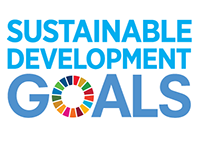Housing Completions
Definition:
The number of housing completions (all dwelling types) in a given area.
Methods and Limitations:
Dwelling Type Definitions:
Data is collected as part of CMHC’s Starts and Completions Survey. For purposes of the Starts and Completions Survey, a completion is defined as the stage at which all the proposed construction work on a dwelling unit has been performed, although under some circumstances a dwelling may be counted as completed where up to 10% of the proposed work remains to be done.
Effective January 1, 2023, CMHC’s Starts and Completions Survey has changed, and housing completions will only be collected in Census Metropolitan Areas (CMAs). This means housing completions data are discontinued for Canada, Provinces, Census Agglomerations of 50,000 or more, urban centres of 10,000 – 49,999 population. This means only CSDs that are part of CMAs will receive housing completions data.
The Starts and Completions Survey is conducted through site visits. These visits are used to confirm that new residential units have reached set stages in the construction process. Since most municipalities issue building permits, they are used as an indication of where construction is likely to take place. In areas where there are no permits, reliance is placed either on local sources or other field enumeration procedures.
Dwelling Type Definitions:
A “Single-Detached” dwelling (also referred to as “Single”) is a building containing only one dwelling unit, which is completely separated on all sides from any other dwelling or structure. Includes link homes, where two units may share a common basement wall but are separated above grade. Also includes cluster-single developments.
A “Semi-Detached (Double)” dwelling (also referred to as “Semi”) is 1 of 2 dwellings located side-by-side in a building, adjoining no other structure and separated by a common or party wall extending from ground to roof.
A “Row (Townhouse)” dwelling is a 1-family dwelling unit in a row of 3 or more attached dwellings separated by a common or party wall extending from ground to roof.
The term “Apartment and other” includes all dwellings other than those described above, including structures commonly known as stacked townhouses, duplexes, triplexes, double duplexes, and row duplexes.
A mobile home is typically defined as a type of manufactured house that is completely assembled in a factory and then moved to a foundation before it is occupied.
Dwellings excluded from the survey include:
- trailers or any other movable dwelling (the larger often referred to as a mobile home) with no permanent foundation
- conversions and/or alterations within an existing structure
- seasonal dwellings, such as: summer cottages, hunting and ski cabins, trailers, and boat houses
- hostel accommodations, such as: hospitals, nursing homes, penal institutions, convents, monasteries, military, and industrial camps
- collective types of accommodation such as: hotels, clubs, and lodging homes
Housing completions are counted for housing in all intended markets. The intended market is the tenure (own or rent) in which the unit is being offered. This includes the following categories:
- A homeowner (or freehold) unit is a residence where the owner owns the dwelling and lot outright.
- A Condominium (including Strata-Titled) is an individual dwelling unit which is privately owned, but where the building and/or the land are collectively owned by all dwelling unit owners. A condominium is a form of ownership rather than a type of dwelling.
- A Rental unit is a dwelling constructed for rental purposes, regardless of who finances the structure.
- A Co-operative (Co-op) is a tenure type where occupants form an association or a corporation (typically non-profit). Co-op members own and operate a group of housing units, including common areas and other amenities. The members own a share in the co-operative, are entitled to occupy a unit and have access to common areas and amenities. Monthly housing charges are set by the members to cover the cost of running the co-op.
Geographical areas modified every 5 years to reflect most recent census definitions, therefore, data are not strictly comparable historically.
These data are obtained from Canada Mortgage and Housing Corporation (CMHC) and are provided subject to CMHC Licence Agreement for the Use of Data.
Source(s):
CMA, CSD, CA: Canadian Housing Market Corporation. 2024. Housing Market Information Portal
Canada, Province or territory: Statistics Canada. Table 34-10-0126-01 Canada Mortgage and Housing Corporation, housing starts, under construction and completions, all areas, annual
 Housing Completions in the Sustainable Development Goals
Housing Completions in the Sustainable Development Goals
Click on the SDG to reveal more information
11. Make cities inclusive, safe, resilient and sustainable
Cities are hubs for ideas, commerce, culture, science, productivity, social development and much more. At their best, cities have enabled people to advance socially and economically.
However, many challenges exist to maintaining cities in a way that continues to create jobs and prosperity while not straining land and resources. Common urban challenges include congestion, lack of funds to provide basic services, a shortage of adequate housing and declining infrastructure.
The challenges cities face can be overcome in ways that allow them to continue to thrive and grow, while improving resource use and reducing pollution and poverty. The future we want includes cities of opportunities for all, with access to basic services, energy, housing, transportation and more.